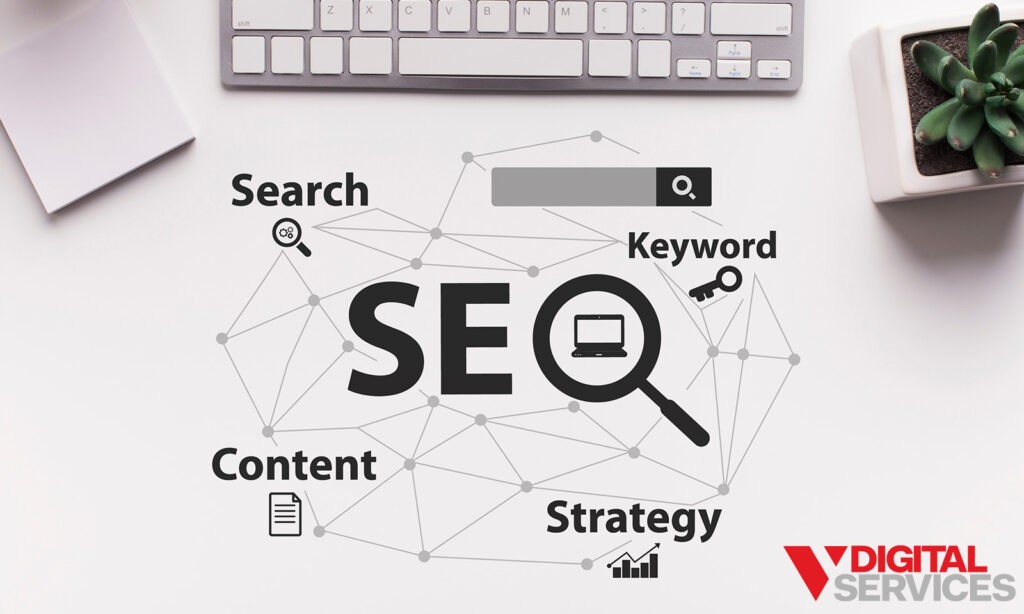In today’s digital world, developing a formidable online presence is key to the success of any business. An effective SEO content strategy is one of the key elements to maintaining this online presence. Are you struggling to drive website traffic and improve search engine rankings? It’s time to learn how to build an effective SEO content strategy to help you achieve your goals.
With the ever-evolving algorithms of search engines, getting your website to rank high in search results is becoming more challenging. However, implementing a well-planned SEO content strategy can increase your chances of attracting organic traffic and boosting your online visibility.
Creating valuable and optimized content is the cornerstone of a successful SEO strategy. But simply churning out blog posts and articles won’t cut it. You must build an effective SEO content strategy to stand out from the competition and achieve long-term success.
This article will guide you through the essential steps to create an SEO-friendly content plan that will drive results and take your online presence to new heights.

What is SEO Content?
SEO content is an essential component of any successful online marketing strategy. It involves crafting content using strategically targeted keywords that are attractive to search engines and designed to help raise your website in the rankings. The goal is to attract organic, high-quality traffic to your website. When creating SEO content, you must pay close attention to the keywords and writing quality, presentation, and overall text structure.
In addition to effectively targeting keywords, SEO content should be engaging for readers and provide valuable information that entices them to stay on your website for longer. Quality SEO content should be written specifically for humans and non-aggressive with its use of keywords; keyword stuffing reduces readability and can cause search engine algorithms to penalize your site. In addition, use topic headings, as well as internal and external links, so that search engines can better understand the relevance between what you’re saying and what people are searching for online. With well-written, relevant SEO content, you can build trust and authority with potential customers and give them the information they seek quickly – allowing them to answer their questions and meet their needs without having to leave your page.
Why is SEO Content Important for Your Business?
SEO content is an integral element of any digital marketing strategy. It’s an effective way to get your website noticed by search engines and given higher rankings in the SERPs. When done properly, SEO content can increase your page visibility, boost your website traffic, and improve customer engagement. As such, creating excellent SEO content for your business is essential if you want to reach a larger audience with your messaging and create brand awareness.
Well-crafted SEO content allows search engine algorithms to scan and index the exact language associated with certain topics or queries efficiently. This ensures that when potential customers search for products or services related to what you provide, they will find articles related to their questions instead of generic or irrelevant pages on your website, encouraging people to learn more about what you do. Additionally, good quality SEO content shines a spotlight on your products and services, helping you stay ahead of the curve among competitors who may not be actively using this tactic in their own digital strategies.
What is an SEO Strategy?
A well-thought-out SEO strategy is essential for any business or organization that desires to succeed in today’s online-driven world. An SEO strategy involves optimizing a website’s content according to researched topics and keywords, allowing it to appear more frequently in search engine result pages (SERPs). By carefully researching popular trends and topics in relation to the website, an effective SEO strategy will ensure that the content is tailored around those topics, maximizing success regarding visibility and ranking.
Another important aspect of having an SEO strategy is its ability to help stay on track when creating content. Instead of wasting time guessing what people may be searching for, the keyword research done prior ensures that you’re providing people with content they’re actively looking for. Furthermore, without an organized structure like an effective SEO strategy, it would become much harder for search engine bots like Google’s crawlers to crawl through your webpage to index it and identify areas of authority that are extremely important factors during the ranking process.
Why You Should Combine Your Content and SEO Strategies
Combining your content and SEO strategies can substantially benefit your overall marketing and outreach efforts. SEO-optimized content has the power to reach its intended audience more effectively, improving your chances of being seen by those searching for what you have to offer. Additionally, optimizing content enables search engines to understand the value of your website or blog better and thus display it more prominently in search results—especially when relevant keywords are used.
Quality content is essential, especially as keyword stuffing is no longer effective. Strategically chosen keywords should be woven into complete sentences that create meaningful context around them. This can range from subtle placement within articles and blog posts to intentionally using certain phrases in titles or headings. Once fully optimized, your content will rank higher in searches and serve up to readers more quickly and accurately than non-optimized content. On top of this, optimizing your content communicates the value of products or services offered while encouraging viewers to call or click through links provided in the copy. Combining both SEO techniques with optimized content could be incredibly lucrative for businesses seeking to maximize their digital presence even further.
How to Create SEO Content
Creating effective SEO content is essential for helping your business leverage the power of search engine algorithms to maximize visibility and achieve higher rankings for specific keywords. Every piece of content you publish should be high-quality, tailored to your target audience, and optimized to improve your chances of appearing in SERPs (Search Engine Result Pages) for relevant terms.
When creating content, starting with a plan is important based on who you are targeting and trying to reach. Knowing the ‘who’ will help inform what type of content is likely to attract their attention and provide value. Structuring your content in an easily navigable format can also improve organic ranking results. Additionally, adding headings, subheadings, image galleries, and videos with keyword optimization within the text itself can give your post or page more context for ranked relevancy by search engines. Researching previously searched topics related to yours should also inspire you on what topics people are already searching for so that you can create meaningful SEO topic plans accordingly.
Find a Target Keyword to Center Content Around
When creating content for SEO purposes, keyword research is vital. It helps us determine which keywords are most important for our target audience and ensures we provide the information they’re looking for when they search. After we have our list of keywords, we should choose one in particular to center the content around. This will ensure our content is connected to the topic our audience wants more knowledge on. Furthermore, when selecting a keyword, ensure it is appropriate so your target audience won’t become bored or confused by what you’re trying to communicate.
Creating SEO-friendly content requires some thought and strategy because each piece of content needs to be optimized around one primary keyword without neglecting other associated terms. To make this happen, focus on ensuring the main keyword reflects what your target audience wants from you and is carefully incorporated into each aspect of the article or post – from title and headings to image captions or other supplementary material. Keep in mind that with each piece of content you create, there should be an overall goal behind it; make sure that goal is articulated through efforts with your chosen keyword phrase and associated subtopics within the article being crafted.
Stand Out with Originality
Creating truly original content can be difficult, but it’s ultimately worth it if your goal is to offer readers something they haven’t seen before. Developing an innovative idea and unique approach to discussing topics is paramount for creating content that will stand out amongst countless other online articles. Additionally, by taking a different angle or offering an unexpected point of view on existing information, you can provide content that readers aren’t likely to encounter anywhere else.
It’s essential to be creative and open-minded when trying to come up with original ideas. Avoid pandering to popular opinion or taking the work of others and simply repackaging it in your own words — this will only produce mundane results and won’t capture your readers’ attention. If you find yourself struggling for ideas, there are resources available, such as content services platforms where experienced professionals can help you uncover innovative concepts that nobody has explored yet. By putting in the extra effort upfront, you can ensure that when it comes time to publish your content, it’s something totally new and stimulating that users are more likely to engage with.
What are the Components of an SEO-Content Strategy?
An effective SEO strategy consists of three primary components: rankings, content quality, and measurement. Each part plays an important role in establishing a successful online presence and recurrent website traffic.
Rankings can be improved by utilizing key SEO techniques such as optimizing meta tags, setting unique titles and descriptions for pages and posts, using links to aid navigation throughout your website, submitting sitemaps to search engines, and creating quality backlinks from reputable sources. Optimizing images for faster page loading speeds can also improve rankings on major search engine websites such as Bing or Google.
Content is another important piece of the puzzle regarding SEO success; originality is crucial. Quality content provides readers with valuable information with which they can engage. Additionally, what you communicate about your company needs to be accurate and consistent across channels to reflect positively upon your business’s brand image. Lastly, measurements are vital when seeking long-term SEO success; tracking things like visits, click rates, time spent on site, and amount of shares are essential metrics for your organization’s digital marketing campaigns as this helps to gauge your progress over time.
Rankings
For those trying to boost their rankings, there are a few key things to understand to ensure success. Firstly, creating content that provides value and improves the reader experience is important. This could be done by making posts that offer helpful tips or advice, updating content regularly, and ensuring it is written well with no grammar or spelling errors. Additionally, formatting your website can influence your Google rankings, with titles, heading tags, meta descriptions, and images all important factors.
Next, you must consider how Google bots crawl your website to understand and index its contents. To do this successfully, you should have good navigation menus so visitors can move around the site easily. Quality internal links will also help Google bots rank your pages, as it shows their importance. Ultimately, though, you must ensure your website has regularly updated content, as this gives bots something new and relevant to rank when someone searches for anything related to the page’s topic.
High-Quality Content
Content is a critical element of any website and SEO strategy. Creating high-quality content is an important part of any website, no matter your industry. Quality content establishes trust with visitors and can lead to more engagement with your site. By delivering targeted, meaningful experiences to your audience, they will be more likely to stay longer on your website.
Creating content with both SEO tactics and users’ needs in mind helps demonstrate to search engines that your website should be ranked higher than other similar sites. For instance, including target keywords throughout your content, including blog posts and landing pages, can help boost rankings and allow potential customers to find you through organic search results quickly. Ensuring content is optimized for each stage of the buyer’s journey is an essential step. Building trust with prospects through helpful tips or by emphasizing use cases can increase conversion rates. Ultimately, creating highly visible, targeted content will ensure that searchers can swiftly identify why your business offers the best solution for their problem.
In addition, the quality of the content plays a crucial role in how well it performs in search engine rankings. Google uses algorithms that consider relevance and originality when determining where to place each piece of content. The higher the quality of the content, the better chance it has of ranking highly in search engine results pages (SERPs). To ensure your content is up to par, you should always strive for accuracy and authenticity when crafting pieces for your website or blog. Additionally, incorporating keywords into titles and headings can help visitors find what they’re looking for more easily. Diversifying topics and styles can also ensure that readers get new information each time they visit your site. When creating high-quality content that meets these criteria, you will surely witness success through increased visits and time spent on the page!
Measurements
As a business or website owner, it is essential to keep up with the ever-changing landscape of SEO. Search engine algorithms are constantly being updated and improved, and the best practices for applying SEO are becoming increasingly more complex. It is important to stay informed about these changes so that you can use them to your advantage when creating and implementing an effective SEO strategy.
By taking regular, accurate measurements – such as tracking rankings, traffic, bounce rate, dwell time, click-through rates, and social engagement – you will be able to better determine whether your efforts are paying off and if there are any areas where improvements could be made. Setting KPIs (key performance indicators) before kicking off an SEO campaign will also help you measure the strategy’s success against measurable goals. This type of continual analysis ensures your website reaches its optimum visibility potential in online search engines.

Steps to Create an SEO Content Strategy
Discover Your Target Audience
Understanding your target audience is essential when creating an effective SEO content strategy. It is necessary to research the wants, needs, pain points, and interests of the people you are trying to reach in order to craft the appropriate content successfully. An effective method for achieving this is using buyer personas, specific profiles of a potential customer that you create to get a better sense of who they are and what type of content they’re looking for.
In order to create your buyer personas, start by gathering demographic data such as age, gender, and location (if applicable). Then, identify any psychographic and behavioral characteristics that could be useful to know more about your target audience’s lifestyle. Also, consider their motivations; what do they care about? Don’t be afraid to ask questions in surveys or focus groups in order to get first-hand insight into what makes them tick.
Once you have crafted these personas, use them as a reference point when developing your SEO content plan. They should constantly evolve over time as you uncover new information about your target audience through testing, evaluation, and feedback loops. Keeping tabs on changing trends can also help you hone in on key insights and better understand what kind of content you will need.
Conduct Keyword Research and Develop a Topic List
Conducting keyword research is an essential step in creating content that meets the needs of your target audience. By researching popular terms, topics, and trends related to the subject of your content offerings, you can gain insights into what potential customers or readers are searching for online. By understanding what words people are using to search for information, you will be able to choose keywords that generate more traffic to the content on your website or blog. Additionally, this research can help you develop topics for your content that are likely to draw visitors from search engines and meet their needs once they arrive.
When developing a list of topics based on keyword research, it’s essential to consider a variety of factors such as user intent, sentiment analysis, suggested alternative searches, and seasonal trends. This will ensure your topic list is comprehensive and up-to-date with current industry news and events. Finally, the best way to maintain an effective topic list over time is to continuously monitor relevant keywords and adjust your strategy accordingly when relevant trends change or evolve. Doing so will keep your content fresh and relevant to customer demands, keeping them engaged with each new post or article you offer.
Incorporate Various Content Formats
The first step to creating an effective content marketing strategy is to incorporate different content formats. Additionally, you should research where your target audiences spend their time and consider what type of content they are most likely to interact with. For example, if you have an e-commerce site, many customers may repeatedly frequent blogs or websites related to the products they purchase from you. Therefore, crafting blog posts may help capture a wider audience and draw attention back to your own site.
Do you have product pages with no copy? Another content type might be the need for webpage expansions to better inform potential customers or clients about your offerings—another good adoption to consider is new webpages to the site. Sometimes, current webpages cover too many different services or products and may have a higher bounce rate. By breaking up the content and providing dedicated pages for each service or product, you can enhance user experience and increase the chances of capturing their interest and keeping them engaged on your website.
Fully Optimize Content
Creating and optimizing content is an essential part of marketing your business. It allows you to reach people organically, providing a low-cost way to build relationships with potential customers and drive more traffic to your website. To fully optimize the content you create, you need to do more than just write engaging copy – there are certain steps you need to take for your content to succeed.
First, ensure that all content headings and meta descriptions are completely optimized. These two text areas give visitors quick insights into what they can expect from each page or blog post they visit. Aim to include a keyword or phrase related to the topic in the heading and meta description, and include any call-to-action phrases that might pique their interest and lead them further into the content.
Second, it’s also vital that you create a system of checks and reminders for yourself (or for your team) so that optimization techniques are always used whenever new pieces of content are created or updated. Having this type of system in place also helps ensure that any edits made adhere strictly to SEO best practices so search engines like Google will recognize it as valuable information when ranking webpages within its results pages.
Develop a Link Building Strategy
When it comes to link building, the goal is to increase the amount of inbound links to your website or content from other websites and sources. Internal linking is one way to build more links back to your own pages, which adds an additional layer of SEO relevance and helps users find content that they may not have otherwise found. External link building is just as important; by obtaining backlinks from highly reputable websites or influencers, you can maintain a good standing in search engine rankings.
To develop a successful link-building strategy, you must first determine how you will include links within your content or on your website. Think about where page visitors are most likely to click; including strong internal and external links within popular pages can make them much more likely to explore deeper into your content. Additionally, look for ways to encourage legitimate websites or influencers to cite yours as a source; this will boost your reputation and make it easier for potential customers and partners to find useful information hosted on your site or published elsewhere online by your team.
Continually Update User Experience and Content
Content and user experience are integral aspects of any successful website or application. Without proper attention, dated content and a poor user experience can negatively impact your strategy.
One way to stay current is to continually update the content you offer on your website and application. Make sure it is relevant to what users are looking for, up-to-date with industry trends, and engaging enough to keep them coming back. Similarly, any features you build must improve the overall user experience to succeed.
Periodically assess existing features and ensure they still meet the needs of your users, then use feedback from this assessment to plan further improvements and enhance engagement. In addition, look into new technologies that have emerged recently; integrating them into your site may be beneficial if they make navigation or interaction easier. By addressing content and user experience in tandem, you can create an effective web presence and keep up with constant technological changes and customer expectations.
Track and Measure Results
Tracking and measuring the performance of content and SEO efforts is critical in ensuring success in any digital marketing strategy. Doing this enables you to understand what works, where your customers are coming from, and where they’re engaging with your brand the most. Measuring results can also give you valuable insights into optimizing your content for search engine rankings and more effective marketing channels.
To best use tracking and measuring tools, setting up Key Performance Indicators (KPIs) for yourself before you begin collecting data is important. KPIs help define success and identify areas for improvement. For example, if you plan on tracking organic traffic, one KPI might be to increase visits by 15 percent monthly while keeping the cost per click within a certain range. On the other hand, if you’re analyzing advertising campaigns, clicks per impression or total conversions may be better KPIs for your business goals.
Whatever type of business goal it is that you want to take on, measuring results will help you evaluate progress toward achieving them. By tracking success metrics that relate directly back to those goals, marketers can stay agile with their approach and make quick decisions about their strategy as needed.
Monitor Changes in SEO Best Practices and Search Engine Algorithms
Monitoring changes in SEO best practices and search engine algorithms is crucial to a successful content strategy. As search engines are constantly changing their algorithms to provide users with more accurate results, companies must stay up-to-date on the latest SEO news and adjust their strategies accordingly. For example, Google recently announced its BERT algorithm update, which shifted emphasis from exact-match keywords to more natural language processing. Marketers should be sure to research and understand the difference between various keyword types (such as long tail versus short tail) and how they will impact their rankings going forward to manage the implications of current content strategies.
Moreover, with new trends in technology emerging every day, staying on top of trends related to AI and voice search can also help companies keep up with user preferences. For instance, AI speech recognition systems are increasingly being implemented in homes as virtual assistants like Alexa, which require marketers to consider alternate ways of wording their queries or phrasing keywords. Regularly monitoring SEO best practices ensures organizations don’t fall behind competitors and can benefit from advancements in digital technology at any given time. Companies must continuously strive to create high-quality content while considering the ever-changing environment of their online presence.
Bonus Tip: Hire Experts in SEO and Content
The decision to hire an SEO and content expert can be a daunting one for business owners. But before making the leap, it’s important to understand exactly what these experts do and why they are so important. Investing in an expert will help you save time and also help you ensure that your website is optimized correctly for maximum exposure.
SEO and content experts can use their in-depth knowledge of metrics such as page speed, domain authority, and content optimization to identify areas of improvement for your website. They will also advise you on the best practices for optimizing content, developing link-building strategies, tracking metrics over time, and testing different approaches. Content experts will be there to guide topics and create the high-quality content your site needs.
Experts also help by simplifying complex concepts and helping you stick with highly effective tactics; they have the ability to take your online presence from mediocre to extraordinary. Working with the right expert can make all the difference in increasing traffic, sales, and the overall success of your digital marketing efforts.

Let’s Talk About What V Digital Services Can Do for You
V Digital Services is an industry-leading digital marketing agency that enables organizations to design, optimize, and deliver personalized experiences to customers, prospects, and partners. We help companies create engagement-driven journeys that provide the right message at the right time across multiple customer touchpoints – from mobile apps and social media channels to websites. We manage your brand’s digital presence with clear ROI (Return on Investment) reporting. We deliver measurable results by focusing on customer experience and client satisfaction and hold ourselves accountable to ROI. Our expertise comes from decades of professional experience in sales, advertising, digital marketing, and consulting.
For those interested in learning more about V Digital Services, get your free digital assessment. During an exploration call with one of our experts, you will be introduced to an array of V Digital Services services that could benefit your organization’s unique needs. With our dedicated campaign management team and advertising and digital marketing experts, you can explore how VDS provides hyper-personalized engagement experiences for customers throughout their entire journey.
With an agency like VDS by your side, it’s easier than ever to stay connected with your audience every step of the way — ensuring greater delight each time they interact or engage with your brand or services.
Photo Credits:



 PREVIOUS
PREVIOUS